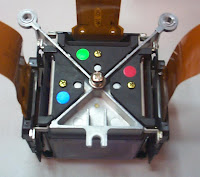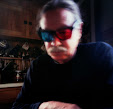Titanfiles is a system which provides not only networked storage which is available on-line from anywhere, but it also allows you to control with whom you want to share either a single document or a whole directory. It also turns out that it's not a bad little video server.
Digital video files have many useful purposes in education. You can provide a more personal message to on-line students or demonstrate a procedure that students are sure to have to review when they actually have to do it weeks after it was demonstrated in lecture. It's also been common practice to record students giving presentations or sample lessons to give them feedback and critique on their performance.
One big problem is video files are HUUUUGE! The quality of file you see on YouTube can be a megabyte a minute, and DVD quality about 7MB a minute. Exchanging these things via email can create problems. The limit on attachment size with Titanmail is 10MB. I guess you could fit some video under that limit, but if you were sending that file to multiple people, you could put some serious strain on the email system.
Instead, you could put the file in your Titanfiles account. You've got a gigabyte available. Then create a ticket, which is just a specially encoded URL, and send that to whomever you wanted to watch the file.
Try this link https://titanfiles.uwosh.edu/xythoswfs/webui/_xy-403380_1-t_eXwZu1dW (It will probably go to a new window, just click the back button to get back to the blog.)
You can also put files stored on Titanfiles in D2L, but it's a little more complicated. For reasons I don't yet understand, when the ticket link in D2L is clicked in some browsers (Internet Explorer), it sends you to the authorization page. Logging in won't help you at all because the people you want to watch the file only have authority through the link.
However, you can insert files stored on Titanfiles in a D2L topic, embedded right on the web.page, which is cool, because you can still have the rest of the information on the page displayed.
It looks like this.
You have to edit some HTML (the language the web is written in). That sounds scary, but it's really just a matter of a little copy and paste. The complete directions are on my web site.







